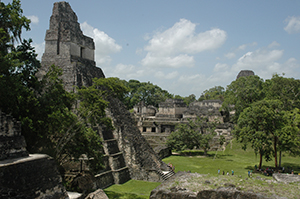-
Membership
Membership
Anyone with an interest in the history of the built environment is welcome to join the Society of Architectural Historians -
Conferences
Conferences
SAH Annual International Conferences bring members together for scholarly exchange and networking -
Publications
Publications
Through print and digital publications, SAH documents the history of the built environment and disseminates scholarship -
Programs
Programs
SAH promotes meaningful engagement with the history of the built environment through its programs -
Jobs & Opportunities
Jobs & Opportunities
SAH provides resources, fellowships, and grants to help further your career and professional life -
Support
Support
We invite you to support the educational mission of SAH by making a gift, becoming a member, or volunteering -
About
About
SAH promotes the study, interpretation, and conservation of the built environment worldwide for the benefit of all
My Summer with Maya and SAHARA
Sep 5, 2013
by
Leah McCurdy
Slightly tongue in cheek, I can accurately say that Maya (architecture) and I have been through a lot together. As if old friends, I spent my summer with Maya architecture and the SAHARA image archive. I am a doctoral student specializing in archaeological studies at the University of Texas at San Antonio and have always held an intense interest in ancient architecture. This summer I completed my sixth field season excavating Maya structures and was able to introduce my new friend SAHARA into the mix. I am impressed by SAHARA’s range and capacity for research and teaching. I was motivated to build a better relationship between these friends of mine, Maya and SAHARA.

Figure 1. Great Plaza of Tikal, Guatemala with Temple I (right) and Central Acropolis (center)
As a 2013 SAHARA Travel Fellow, I wanted to increase the representation of Maya architecture in SAHARA to bridge the sometimes expansive gap between archaeological studies of Maya architecture and architectural history. Both are extremely important and often overlap in the exploration of Maya architectural expression and its impact on Maya life and culture. For both research and teaching, SAHARA provides an invaluable platform to not only explore the architectural history of a particular culture through specific buildings, sites, or regions, but also to compare and analyze architectural relationships cross-culturally. I hope my collection will afford expanded applications of SAHARA as an important scholarly resource for such Maya related and comparative studies. Further, I hope that my collection will serve the intersection of architectural history and conservation. Architectural historians must often be concerned with both historic and modern conservation. Conservation of Maya structures, as evident in many of the images of my collection, offers many examples where this relationship can be investigated, preserved, and strengthened. Overall, I hope this collection will serve the needs of diverse scholars of architecture and highlight the great impact of the built environment in the Maya world.
-and-central-acropolis-(center).jpg?sfvrsn=56f001c6_2)
Figure 2: Hieroglyphic Stairway of Copan, Honduras with stela and altar pair
My SAHARA collection features six Maya archaeological sites, including: Xunantunich, Cahal Pech, El Pilar, and Altun Ha of Belize; Tikal in Guatemala; and Copan, Honduras. Each site offers unique insight into Maya culture, architectural design and intention, as well as the impact of modern conservation on the representation of architectural history at public sites. This range of sites can also initiate various comparative studies within and beyond the Maya sphere. Xunantunich, Cahal Pech, and El Pilar all belonged to the fluctuating affiliations of the Belize Valley region. Architecture of these sites represents great diversity of palatial complexes and inter-site variation of city planning. Also located in the modern country of Belize, Altun Ha was situated among sites north of the Belize Valley and exhibits distinct architectural character. Farther afield, Tikal and Copan represent grander Maya polities with extensive socio-political reach beyond their own region. Their architectural remains and history account for broader affiliations, larger economic impact, and expression of scale through building. Tikal offers the architectural historian more food for thought regarding architectural planning and the expression of ideology through form (Fig. 1), while Copan’s extraordinary tradition of architectural art begs questions about iconographic expression and the marriage of formal and aesthetic planning in monumental architecture (Fig. 2). Comparative studies of such architectural topics with distinct cultural traditions can reinforce and expand the intersections of archaeology and architectural history. SAHARA offers an accessible platform from which we can focus on our personal specializations and open our lens to broad connections and distinctions in architectural history writ large.


